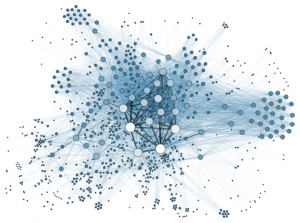How do you reach common ground between brand and direct response campaigns? Columnist Alison Lohse says we need new metrics and more granular data to help bridge the divide between the two.

In traditional marketing organizations, brand and direct response (DR) efforts occupy two very distinct and discrete positions. Brand tends to focus on long-term impact intent, and DR focuses on short-term. Brand is top of funnel, and DR is bottom of funnel. The two categories are different sides of the same coin, with the same end goal, but enjoy few day-to-day commonalities.
The metrics used to measure these initiatives reflect this disparity. Brand marketers focus on sentiment, engagement, interaction, equity and other slightly “fuzzy” KPIs, while direct response marketers look at transactional metrics and behavioral response: This $1.00 returned $1.50, based on this consumer action.
When these silos formed, the distinction made sense. It is admittedly challenging, even with today’s plethora of data and technology (let alone what we had 10 years ago), to bridge the gap between brand and DR. Intuitively and organizationally, from the people to the numbers, the rift is wide. But here’s the catch: CMOs don’t care.
The C-suite as a whole wants to get its arms around the effectiveness of the entire marketing department. Your CEO doesn’t want to hear about the differences between brand and DR, so your CMO can’t either.
The pressure is coming from multiple directions. Companies must be increasingly accountable for their digital footprint. Consumers expect increasingly high levels of personalization, relevance and speed. And CMOs have never been more under the gun to orchestrate all of the moving pieces into one cohesive and precisely measured agenda.
Reaching common ground
So, what does it take to reach common ground between brand and direct response campaigns?
Historically, companies attempted to bridge the gap with marketing/media mix modeling (MMM). MMM answers high-level questions well and addresses the brand side of the equation admirably, but it is ultimately too broad and not actionable enough to effectively integrate direct response.
The pendulum is now swinging to the other side. Organizations have begun to look to their performance agencies for more comprehensive insights, in hopes that new technology and an elevated emphasis on incrementality and investment will translate across both languages.
A recent AdExchanger article provides some nice examples of the latter approach. One agency “tracks online consumer satisfaction with brands and matches it to data from campaigns run on Google, Facebook, LinkedIn, Pinterest, and other social channels … [the] combination of first-party and behavioral data allows it to target consumers with the right message, in the right place, when they are most receptive.”
Another agency “uses content as a vehicle to measure consumers’ relationship with a brand and ties that back to a purchase … using a combination of behavioral and referral data.”
What’s the recurring thread here? Data.
We can’t make DR metrics answer brand questions or vice versa. But through data science, we can create a foundation for new metrics that address both the short- and long-term impact of marketing.
Like most modern marketing efforts, a data-based bridge between brand and direct response involves both people and technology.
From a people perspective, marketers must look beyond their own borders and trust the technologists. Marketers themselves aren’t going to solve this problem; we must work with data experts to figure it out. This will include trial and error, and we must be comfortable with that.
Thinking differently with new metrics
New answers require experimentation. We know that our existing well of solutions doesn’t adequately connect brand and DR, so it’s time to let go of our security blanket of comfy cozy metrics and think about how to do it differently. We need new metrics. Data scientists will help us find them.
This recommendation goes in the “easier said than done” category. All marketers these days are charged with innovation, but also face shorter-than-ever tenures that make experimentation a huge risk. Take it anyway.
From the C-suite to the budget owners, it’s critical to trust the data, trust the technologists and be open to a new metrics system, even on the off chance that you won’t be around to see it through (although if you make it work, the risk will certainly pay off.)
Which brings us to technology. The brand/direct response dichotomy can seem like an MMM vs. attribution conversation, but it’s not that simple. To bridge the gap, we don’t need one or the other, or even both — we need something different.
The solution will come not from one martech silo but from increased data granularity across the ecosystem. More granular data provides the new lens through which to look at both brand and DR performance and create a unified accountability between the two.
What does that look like in practice? DMPs (data management platforms) play a role, as do attribution and MMM. Machine learning certainly steps up to the plate, crunching numbers at a speed and scale that enables marketers and technologists to explore the relationships between brand and DR in new ways.
You may find one new metric that cracks the code for your organization, or an entirely new set; the answer may also come from old metrics applied in new ways. The particular KPIs are less important than the mindset behind them: a commitment to good data, the willingness to experiment, trusting your technologists and cooperation between platforms.
Bridging the gap between top- and bottom-funnel marketing efforts is not about brand becoming DR or DR becoming brand. It’s about understanding the holistic effects of your cumulative investment in a more granular fashion as a replacement for siloed measurement.
The common ground between direct response and brand marketing may not be easy to see, but it’s there. It’s up to forward-thinking marketers, empowered by data science, to uncover it.
Some opinions expressed in this article may be those of a guest author and not necessarily Marketing Land. Staff authors are listed here.
Marketing Land – Internet Marketing News, Strategies & Tips
(39)






